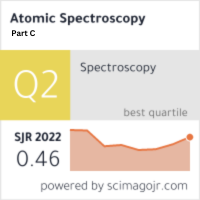Analysis Of Low Power 16-Bit Processor Using Cadence - 90nm Foundry Technology
Keywords:
Low Power, 16-bit Processor, 90nm, Power dissipation, Dynamic-power, Static-Power, CDC.Abstract
In the era of wearable devices, there is an increasing demand for energy-efficient solutions to prolong battery life and reduce environmental impact. This work focuses on the design and implementation of low-power techniques of 16-bit processor that can be specifically tailored for IoT applications. This research presents a comprehensive exploration of the design and implementation of a 16-bit processor utilizing 90nm semiconductor technology. The design process begins with a detailed analysis of the 16-bit processor architecture, considering key components such as the Arithmetic Logic Unit, Register file, Instruction register, Mux, PC, Data Path and Controller subsystem. A systematic approach is employed to optimize critical pathways ensuring efficient data flow and reduced signal propagation delays. To leverage the benefits of 90nm technology, the design incorporates smaller feature sizes, enabling higher transistor density and improved energy efficiency. Cadence synthesis and optimization tools are employed to refine the design, considering factors such as transistor sizing, interconnect optimization, and layout considerations. The introduction of clock domain crossing mechanisms plays a pivotal role in power reduction. By dynamically controlling the 100MHz clock signals to specific modules based on their operational requirements, power consumption is significantly lowered during periods of inactivity. The design also explores trade-offs between power savings and potential impacts on performance, ensuring a balanced and efficient system. Simulation results and performance metrics are presented to validate the effectiveness of the proposed 16-bit processor design. This research contributes to the ongoing efforts in developing energy-efficient processors, providing valuable insights into the synergies between advanced semiconductor technologies and power optimization techniques. The findings are relevant for the design and implementation of processors in applications where power efficiency is a critical consideration, such as IoT based portable devices and energy-constrained environments. The power dissipation using 90nm is 1478912.42111nw for full-data path with 19052 instances & 327683.6475nw for controller with 211 cells.



